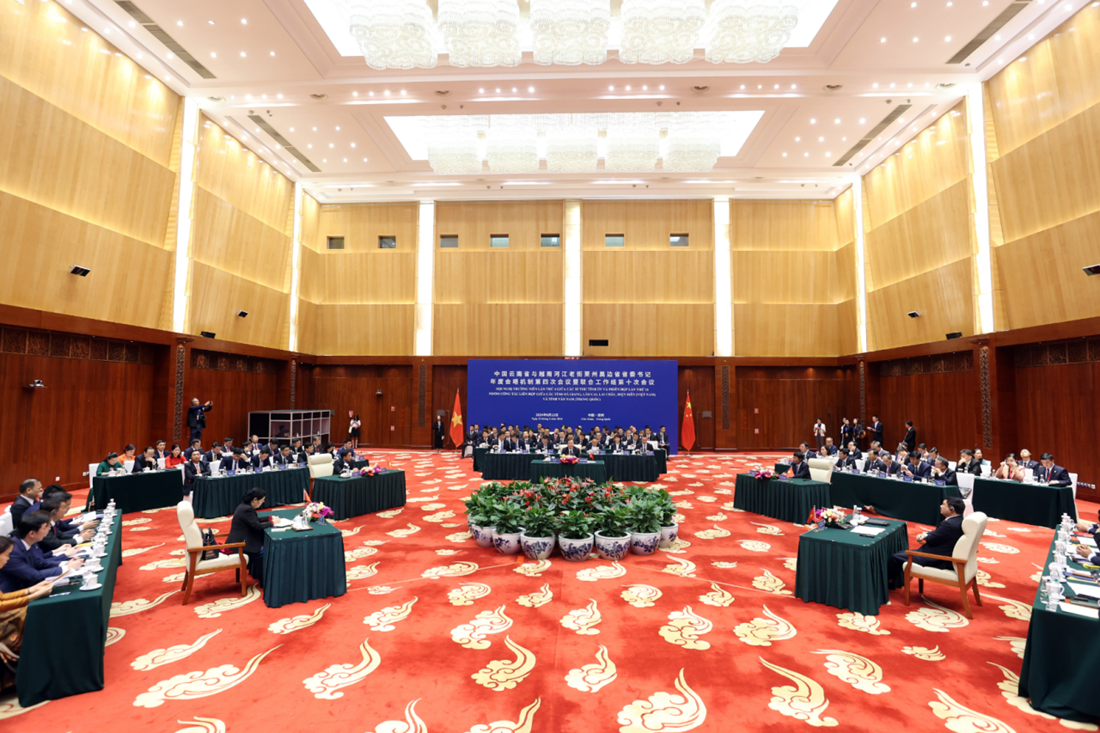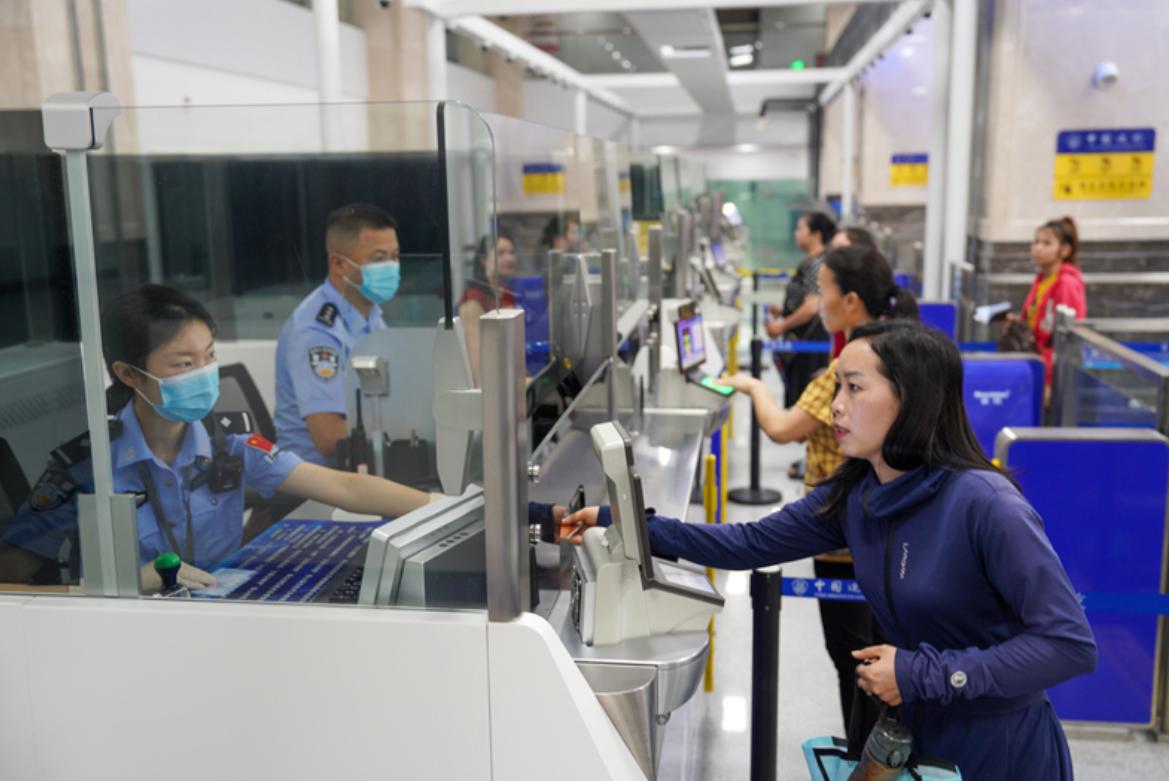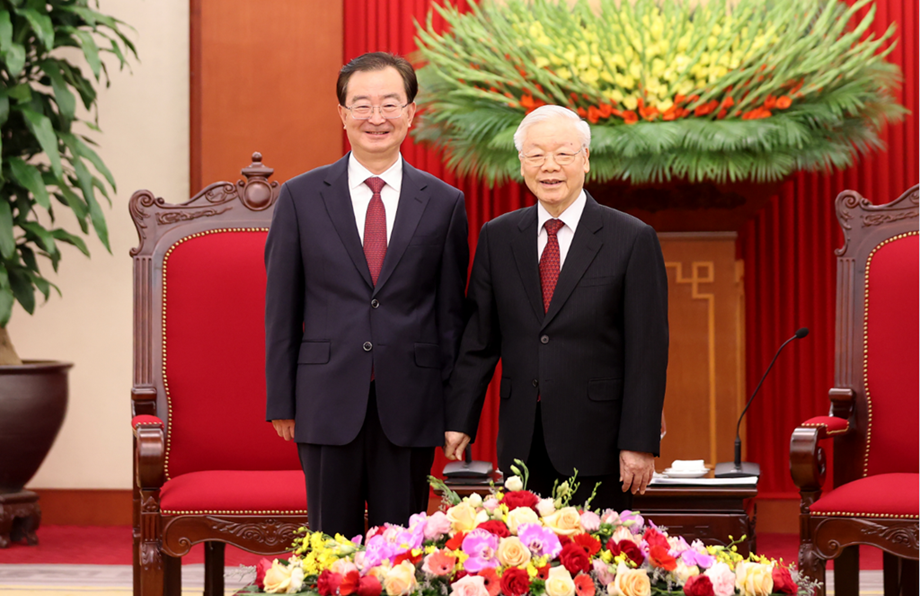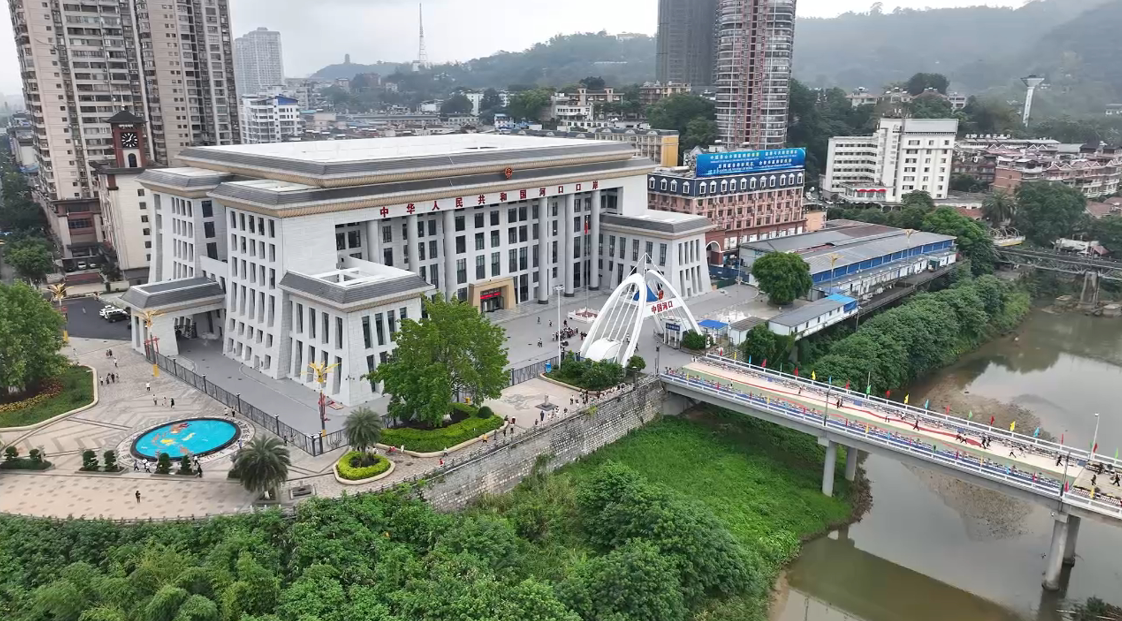Eric's Insight: Yunnan-Vietnam meetings bear fruits in mutual trust, connectivity
The 4th annual meeting between the Chinese province of Yunnan and the northern Vietnamese provinces of Lao Cai, Ha Giang, Lai Chau and Dien Bien was held in central Yunnan’s Kunming city on June 12. Over the years, the Yunnan-Vietnam meetings have boosted the bilateral cooperation that features mutual trust in politics and connectivity in facilities.

The 4th annual meeting between Yunnan and Vietnamese provinces of Lao Cai, Ha Giang, Lai Chau and Dien Bien is held in central Yunnan’s Kunming city on June 12.
Mutual trust in politics
At the 4th meeting, Wang Ning, secretary of the CPC Yunnan Provincial Committee, said the province is willing to work with its counterparts in Vietnam to promote the traditional friendship between China and Vietnam and strengthen diverse cooperation for win-win results by implementing the Joint Statement on Further Strengthening and Deepening the China-Vietnam Comprehensive Strategic Cooperative Partnership.
Signed during the 2022 official visit to China by Nguyen Phu Trong, general secretary of the Communist Party of Vietnam (CPV) Central Committee, the joint statement said: “The two sides agree to organise theoretical seminars between the two Parties, enhance exchanges and cooperation between agencies of the two Parties at the central level and Party organisations in localities, especially border provinces/regions.”

Tourists get through inspection at the Hekou gate near the China-Vietnam border section in south Yunnan.
When it comes to the Chinese border areas or localities near Vietnam, Yunnan province becomes prominent for it shares a 1,300km border section and seven pairs of border gates with the country and it has been looking to cooperation with the Vietnamese localities over the years, especially with the four provinces in northwest Vietnam.
During the second annual meeting between Yunnan and the Vietnamese provinces in 2022, Wang Ning said the five provinces are key to the synergy between the China-proposed Belt and Road Initiative and the Vietnamese "Two Corridors and One Belt" framework in the border areas. In March 2023, Wang visited Ha Giang for the quinquelateral meeting, proposing seven initiatives to improve customs clearance, train cadres, reduce poverty, develop tourism and others. He also reached Hanoi to talk with general secretary of the CPV Central Committee Nguyen Phu Trong and Vietnamese prime minister Pham Minh Chinh.

Wang Ning visits Nguyen Phu Trong, general secretary of the CPV Central Committee, after the 2023 quinquelateral meeting.
In Chinese and Vietnamese provinces, the provincial Party secretaries are top leaders who steer the political and economic trends in their respective regions. By engaging in direct talks regularly with his counterparts from the four provinces in northwestern Vietnam, which border south-southeast Yunnan’s prefectures of Honghe and Wenshan, Yunnan Party secretary Wang Ning is taking the lead in boosting political trust and economic growth in the border regions. Now Wenshan and Honghe are joining hands with the four Vietnamese provinces in planting sugar cane and star anise, bringing extra income to villagers in the border areas.
At this year’s meeting, Wang Ning suggested that the 5 provinces should work closely to enhance friendship and mutual trust, deepen communication on policy-making and industrial development, and strength connectivity to increase efficiency in regional logistics and transportation. Following the meeting, Yunnan and north Vietnam are expected to see more mutual trust politically, and such trust is laying a solid foundation for seamless connectivity and economic cooperation.

Freight trucks cross the Hekou border gate.
Connectivity in facilities
For more than a century, Yunnan has been connected with Vietnam by a meter-gauge railway that was built up by French colonists. However, the meter-wide gauge is no longer connectable to the Chinese railway network that is build up in accordance with internationally-accepted standard gauge. So the national leaders of the two countries have agreed to upgrade bilateral connectivity in railway and others.
During his talk in 2022 with Xi Jinping, general secretary of the Communist Party of China Central Committee, Vietnamese Party leader Trọng sought favorable conditions for cooperation in air, road and rail transport. “The two sides are willing to discuss and reach agreement on a plan to connect the railway between Lào Cai station (Việt Nam) and Hekou North station (China),” said the joint statement issued following the talk.

Honghe prefecture in south Yunnan ushers in a group of Vietnamese tourists.
As of now, the Yunnan section of the new Yunnan-Vietnam railway has been built up with a designed speed of around 200km/h, with construction of the highways and customs-service facilities gaining speed in the border areas. The Tianpeng-Sam Pun border gates between southeast Yunnan’s Wenshan and northwest Vietnam’s Ha Giang have been in smooth operation for months, and two international passenger and cargo routes were opened to link Yunnan to Lai Chau and Ha Giang, facilitating cross-border freight and bilateral trade.
In the first quarter of this year, the Hekou dry port near the China-Vietnam border section in south Yunnan was crossed by more than 1.27 million persons, with the cross-border freight reaching 624,000 tons. In early May, a new building for joint inspection over the cross-border persons and cargos via highway was put into trial operation at Hekou border gate, boosting port economy and free trade between Yunnan and Vietnam, as well as between China and other ASEAN countries.

The new building for joint inspection stands near the China-Vietnam border section in south Yunnan’s Hekou county.
In the coming months of 2024, Yunnan will continue its pragmatic cooperation with its Vietnamese peers by increasing imports of agricultural products from Vietnam, strengthening cooperation in poverty reduction, carrying out cadre training programs, and encouraging more Vietnamese to study in Yunnan, said Wang Ning at this year’s meeting.
If the Yunnan-Vietnam hard connections in railways and highways are full achieved, together with the soft connections of in-depth policy communications and frequent people-to-people exchanges, the Kunming-Laocai-Hanoi-Haiphong-Quangninh corridor, part of the Vietnam-proposed “Two Corridors, One Belt” framework, will be basically materialized. By then, the Vietnamese economy will benefit more from the fast Chinese railway/highway networks and the special Chinese path to modernization, with the five provinces fulfilling their due roles in the China-Vietnam community with a shared future that carries strategic significance.
Writing by Wang Shixue; Photos by Yunnan Daily; Proofreading by Zu Hongbing and Wang Huan